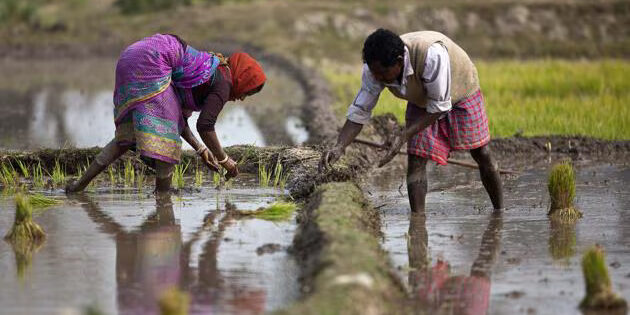The agriculture sector, followed by the construction sector, is the biggest employer in the country. The revival in the agriculture sector will serve the twin problems of farmers’ distress and new job opportunities. The agriculture sector has been waiting since long for the dynamic and best brain of the union cabinet to lead it.
There have been many people who have contributed when the occasion demanded them to perform, it included the general public of the nation as well as the prime minister of the nation. Former prime minister late Sri. Lal Bahadur Shastri Ji himself asked his family first to skip one meal per day before asking the nation to skip at least one meal per week. Dr. M. S. Swaminathan himself advocated for green agriculture, organic agriculture, and natural agriculture. Although he is best recognised as a promoter of the green revolution, which was dependent on high uses of chemical fertilisers, he acknowledged that those were the strained days of ship-to-mouth and that Bharat should transit itself to organic farming. Dr. V. Kurien has done what needs to be done for vegetables and fruits. He developed a model of cooperative that is AMUL, and the striking thing is that its basic product is the most perishable item, i.e., milk, and it has a shelf life of only two to three hours. The successful cooperative model of Amul and the successful agriculture policy of Madhya Pradesh are a signal for the revival of agriculture dependent rural economies.
The share of the agriculture sector in the state gross domestic product (SGDP) of Madhya Pradesh is more than 46 percent. This is unbelievable to many who hear it for the first time and hence start looking for data to confirm it. But Sri. Shiv Raj Singh Chouhan did it, and it is reflected in his personal winning margin, the clean sweep of his party in Madhya Pradesh Lok Sabha seats, and the thumping majority of his party in the last concluded assembly election, which was also when Shiv Raj Ji was leading the state election as chief minister for the fourth time.
The data speaks for itself. decades ago, powerful, smart, and the best brain leadership in the ministry of agriculture led to farmers’ suicide, while the current union minister of agriculture has yet to generate data, but as a chief minister of the state, he led the agriculture sector’s contribution to the SGD to 46 percent. The incumbent minister that the agriculture minister got is a powerful executor of the policy, already demonstrated success in the sector, and the expectations from him are too high. Imagine if the nation’s half of the gross domestic product (GDP) contribution is from the agriculture sector. Currently, the national GDP contribution from the agriculture sector is fifteen percent, and the contribution from the the contribution from the services sector is fifty-four percent.
The nominal gross value added (GVA) in the financial year 2023–24 of the nation comprises 18 percent from agriculture, livestock, forestry, and fishing; 2 percent from mining and quarrying; 14 percent from manufacturing; 2 percent from electricity, gas, water supply, and other utilities; 9 percent from construction; 17 percent from trade, hotels, transport, communication, and services related to broadcasting; 23 percent from financials, real estate, and professional services; and 15 percent from public administration, defence, and other services.
There are many compositions of GVA that are exclusive to the union government, like defence and communication. So, comparing the GVA of Madhya Pradesh with that of the union government of India is not sensible. But the direction of the contribution does make sense. Madhya Pradesh has successfully demonstrated that reviving the agriculture sector impacts the 70 percent of its population that is dependent on agriculture and allied businesses. Around two-thirds of our national population lives in rural areas, and the major livelihood activities are linked to the agriculture sector. The model of transiting the population for livelihood from the agriculture sector to that sector whose contribution to GDP is higher is one approach, and the alternative approach is to revive that sector, which engages two-thirds of our population. The era of artificial intelligence, robotics, and the and the internet of things is diminishing the requirements of human resources in the manufacturing and services sectors. The engagement of the latest technology in the agriculture sector can be designed in such a way that the model of small is beautiful, which is successful for rural Bharat.
The new cooperatives policy, the “Drone Didi” project, the financial inclusion, the GATI Shakti project, the transition to organic farming, the storage and cold chain policy, and the smart devices everywhere are strong foundations that the union government has provided to the current union agriculture minister to deliver. He can’t simply fail in replicating the Madhya Pradesh model for the whole nation as far as the agriculture sector is concerned. We wish him success and support.
Alok Singh has a doctorate in management from the Indian Institute of Management, Indore, and iscurrently co-founder and director at AGET Business School, Jhajjar, Haryana).






